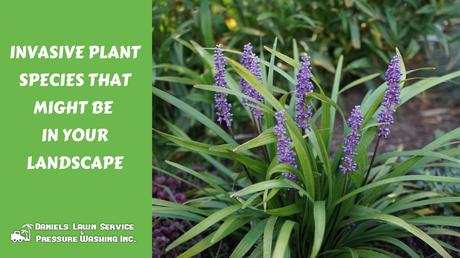
You've doubtlessly seen movies about space aliens that set out to invade Earth. They assume human form, then settle into a town with the intention of spreading out and replacing the real people. But did you realize that leafy invaders with their own nefarious motives may be growing in your very own yard? And that you may have planted some of them yourself?
Are Any of These Invasive Plants in Your Central Florida Yard?Native to China and Japan, Cinnamomum camphora is easily recognizable by the smell of camphor its shiny green leaves give when crushed. Camphor trees have a fast growth rate and produce large amounts of shiny black berries - which are eaten by birds, thus spreading the seed. The Florida jujube, Ziziphus celata , is an endangered native species found in Central Florida that is being pushed out by the camphor tree. This large, round-canopied, evergreen tree has broad, unusually strong branches, and can reach 70 feet in height. The UF/IFAS Assessment of Non-native Plants in Florida's Natural Areas has identified the camphor tree as invasive in North and Central Florida, and does not recommend planting.
A round, deciduous shade tree with fragrant lilac flowers, Chinaberry trees are common throughout Florida. Native to India, China, and the Himalayas, Chinaberry was brought to the United States as an ornamental. This species can reach up to 40 feet in height, and grows rapidly when young. Its aggressive growth rate and lack of natural enemies has caused it to crowd out native plants. Moreover, its fruits and seeds are poisonous to humans - not to mention messy. If you're looking for an ornamental tree that will provide graceful blooms, consider a crape myrtle or .
Owing to its rapid growth and beauty, creeping fig ( Ficus pumila ) is often used for softening the look of exterior walls and fences. This vine's wandering stems and small leaves create an interesting lacy pattern as it grows across the wall. It is also used as a groundcover, as well as for topiaries. Its ability to thrive in both sun and shade has made the creeping fig a landscaping favorite.
The invasive is especially insidious, as it's almost identical to two native sword fern species: Nephrolepis exaltata (also known as wild Boston fern) and Nephrolepis biserrata (giant sword fern). This imposter species is sometimes called tuberous sword fern ( Nephrolepis cordifolia ), and can take over and displace all other ferns, groundcovers and low-growing plants by forming impenetrable dense stands. To make matters worse, there's Asian sword fern ( Nephrolepis brownii ) - also not native, but widespread. University of Florida IFAS Extension provides additional information, as well as photos that will help you identify the invasive and native sword fern species.
Ironically, it's that spreading growth habit that's moved the UF/IFAS Assessment of Non-Native Plants in Florida's Natural Areas to list Liriope muscari (and the related Liriope spicata ) as a high invasion risk. UF/IFAS no longer recommends using liriope in the landscape. For those who want an attractive edging grass, mondo grass is a great, non-invasive option.
Stately, fast-growing pampas grass has long been a favorite for adding a dramatic accent to both residential and commercial landscapes. Unfortunately, pampas grass has been found by the UF/IFAS Assessment of Non-Native Plants in Florida's Natural Areas to be invasive and is not recommended for any use. Instead, consider a native grass like muhly grass , or Fakahatchee .
How to Remove Invasive PlantsShould you remove plants by hand, bag all plant debris, tie bags off tightly and dispose of them in the regular, landfill trash. This prevents cuttings and seeds from establishing themselves elsewhere.
- Many tough ground-cover species can be difficult to remove by hand. In these cases, a process called soil solarization can be the best option - especially during summer. Cover the area with a sheet of clear plastic; bury the edges and wait. After six weeks the plants underneath should be dead. Prolonged periods of cloudy weather may mean extending the treatment period, however.
- In extreme cases, a targeted application of herbicide may be necessary. Before applying, it is important to educate yourself. Irreversible damage to your landscape is possible. Some herbicides are also toxic to humans. Reading and following all label instructions is required by law. Consult the Florida Homeowner Herbicide Guide for more information.
No matter how lovely they are in your yard or garden, invasive plant species are ultimately detrimental to Florida's ecosystem. Removing them requires time, labor and care to ensure that seeds, berries or clippings are properly bagged up and tied off so they can't scatter and produce new plants. Also, using herbicides powerful enough to kill these plants carry their own risks regarding toxicity to humans, animals and the environment.

